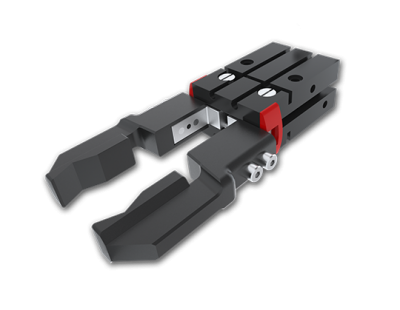
FairlaneProducts announces the launch of the web-based GripShape application that allows users to design and purchase custom robot gripper fingers, available online at www.gripshape.com. GripShape offers design services, a design configurator, and manufacturing services for tooling robot grippers. The interface is easy to use and requires no CAD experience to customize a one-of-a-kind design in minutes.
The GripShape configurator is an intuitive application that is changing how custom robot gripper fingers are designed and purchased. The GripShape configurator offers an automated process for users to design their own gripper fingers in about 10 minutes. The design is made and assembled by Fairlane using additive manufacturing and CNC machining. As an alternative, the user can choose to purchase the CAD download to machine or 3D print at their facility or with another vendor.
“Since the beginning, our products have supported ‘points of contact,'” explained Justin Gordon, president of Fairlane Products. “From serrated gripper inserts in lathe chuck jaws, swivel positioners and rest pads in stationary fixtures to rollers and bumpers in material handling applications, Fairlane products can be found in industrial automation at the point of workpiece contact. It is with this same attention to workpiece contact that we developed GripShape."
With GripShape, users start by choosing a representative workpiece and adjusting its size. Next, they adjust the finger length, grip width, grasp type and more. As the design is fine-tuned, users can refresh the model to see the changes instantly. If the gripper fingers require revisions or other design optimization, users may request a quote in the purchasing section of the configurator and complete the form. Once complete, users can download parasolid CAD files to review the designs in their own CAD projects. As an option, Fairlane will review the design, provide basic feedback and quote the requested revisions.
For many applications, designing functional robot gripper fingers can be complex and sensitive. GripShape is for applications and customers who require full service gripper design. An engineer will work with you to understand the specifics of your application and help design a gripper for your project. This option includes a parasolid CAD model, prototype finger set and/or a production ready finger set. Examples of design revisions range from incorporating a user's workpiece, to adding basic features for part centering.
Contact Details
Related Glossary Terms
- centering
centering
1. Process of locating the center of a workpiece to be mounted on centers. 2. Process of mounting the workpiece concentric to the machine spindle. See centers.
- chuck
chuck
Workholding device that affixes to a mill, lathe or drill-press spindle. It holds a tool or workpiece by one end, allowing it to be rotated. May also be fitted to the machine table to hold a workpiece. Two or more adjustable jaws actually hold the tool or part. May be actuated manually, pneumatically, hydraulically or electrically. See collet.
- computer numerical control ( CNC)
computer numerical control ( CNC)
Microprocessor-based controller dedicated to a machine tool that permits the creation or modification of parts. Programmed numerical control activates the machine’s servos and spindle drives and controls the various machining operations. See DNC, direct numerical control; NC, numerical control.
- computer-aided design ( CAD)
computer-aided design ( CAD)
Product-design functions performed with the help of computers and special software.
- lathe
lathe
Turning machine capable of sawing, milling, grinding, gear-cutting, drilling, reaming, boring, threading, facing, chamfering, grooving, knurling, spinning, parting, necking, taper-cutting, and cam- and eccentric-cutting, as well as step- and straight-turning. Comes in a variety of forms, ranging from manual to semiautomatic to fully automatic, with major types being engine lathes, turning and contouring lathes, turret lathes and numerical-control lathes. The engine lathe consists of a headstock and spindle, tailstock, bed, carriage (complete with apron) and cross slides. Features include gear- (speed) and feed-selector levers, toolpost, compound rest, lead screw and reversing lead screw, threading dial and rapid-traverse lever. Special lathe types include through-the-spindle, camshaft and crankshaft, brake drum and rotor, spinning and gun-barrel machines. Toolroom and bench lathes are used for precision work; the former for tool-and-die work and similar tasks, the latter for small workpieces (instruments, watches), normally without a power feed. Models are typically designated according to their “swing,” or the largest-diameter workpiece that can be rotated; bed length, or the distance between centers; and horsepower generated. See turning machine.







